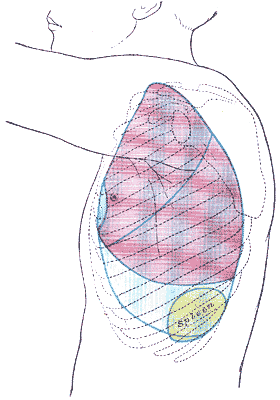Splenomegaly overview
Template:Splenomegaly Editor-In-Chief: C. Michael Gibson, M.S., M.D. [1]
Overview
Splenomegaly is an enlargement of the spleen, which usually lies in the left upper quadrant (LUQ) of the human abdomen. It is one of the four cardinal signs of hypersplenism, the other three being cytopenia(s), normal or hyperplastic bone marrow, and a response to splenectomy. Splenomegaly is usually associated with increased workload (such as in hemolytic anemias), which suggests that it is a response to hyperfunction. It is therefore not surprising that splenomegaly is associated with any disease process that involves abnormal red blood cells being destroyed in the spleen. Other common causes include congestion due to portal hypertension and infiltration by leukemias and lymphomas.
